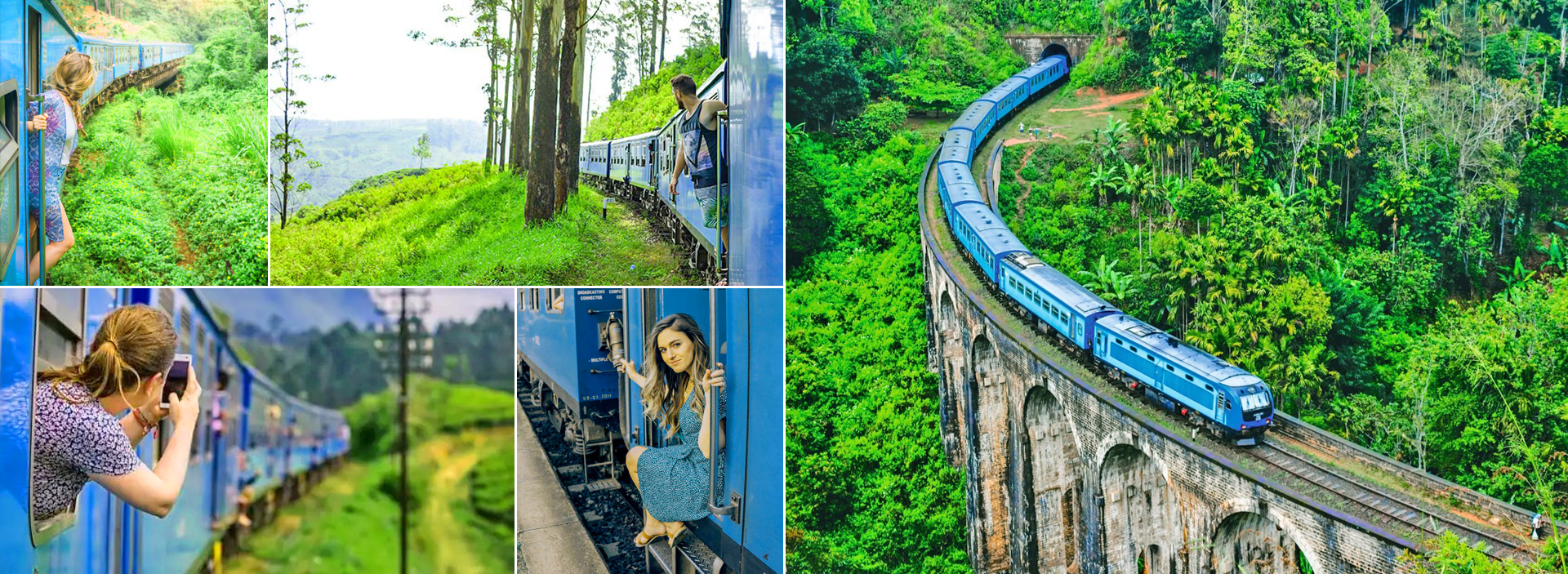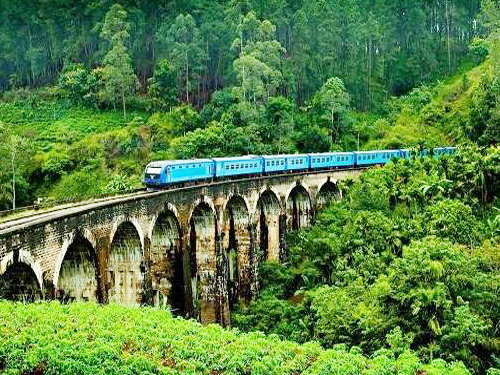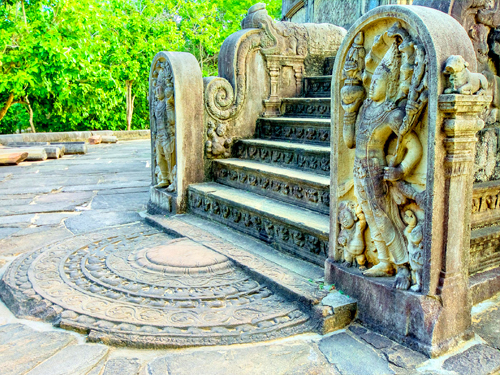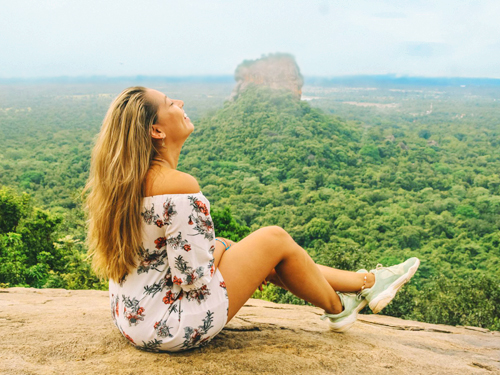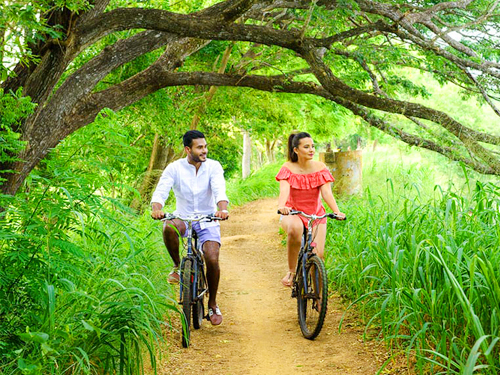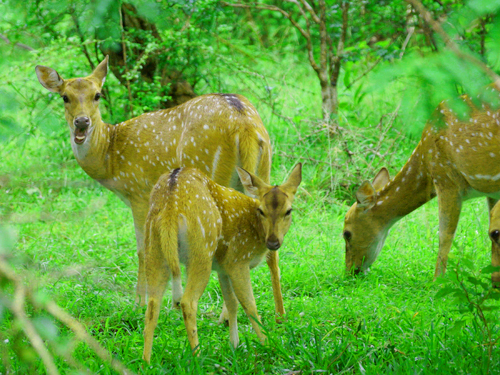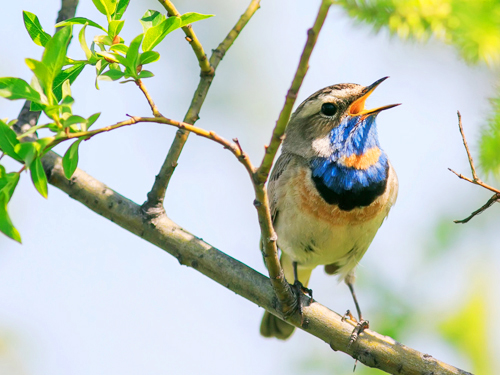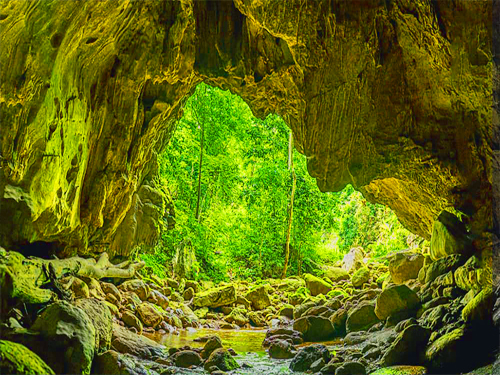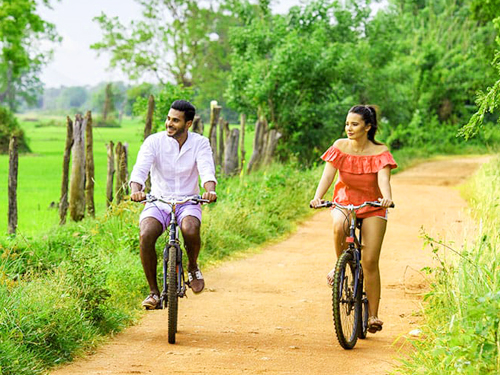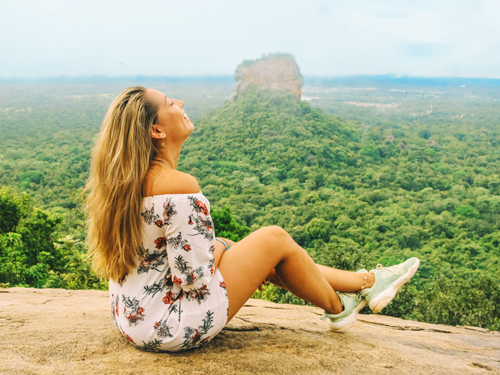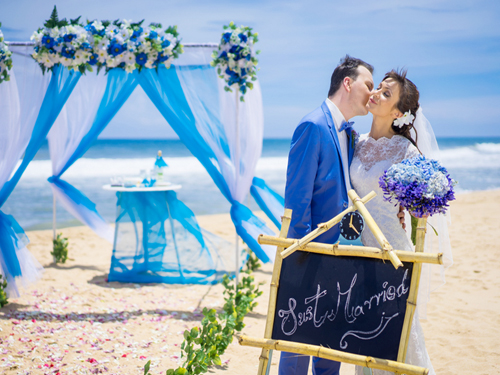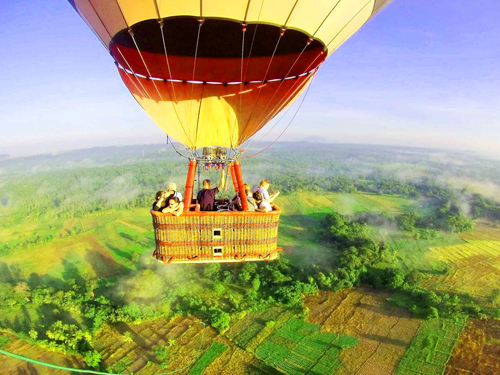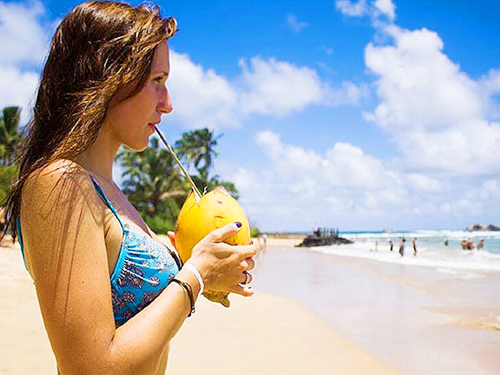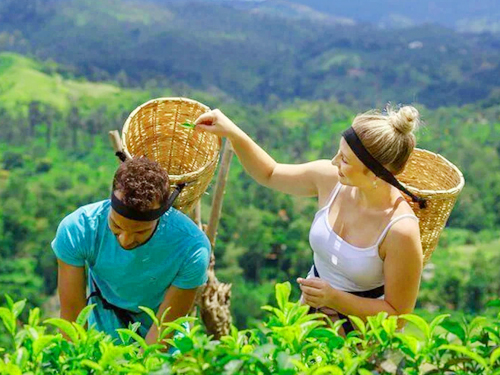Sri Lanka Railway
About of Sri Lanka Railway
Sri Lanka Railways ( SLR) is a government department that falls under the Ministry of Transport. It is the country's only rail transport agency and a major provider of transport services. SLR transports freight and passengers. Railway was originally more concerned with freight than passenger when it was built. Today, however, the railway is more passenger-oriented. SLR's passenger transport market share is approximately 6.0%, and about 0.7% for goods transport.
SLR provides daily commuters in Sri Lanka with a reliable service. Sri Lanka Railway has approximately 396 trains, including 67 long-distance and 16 intercity trains. It carries around 3.72 million passengers every day.
SLR maintains 1561km rail tracks, power sets 78, power sets 78, 565 carriages, and the signalling system. It currently employs 17,634.
The General Manager of Railways (GMR) oversees Sri Lanka Railways (SLR). The Secretary of the Ministry of Transport reports to the General Manager. SLR is divided into ten sub-departments and three units. The Heads of Sub Departments report directly to the General Manager for Railways.
History of Railway in Sri Lanka
In Sri Lanka, rail was first introduced in 1864 to transport coffee beans from the hills of Kandy to Colombo. It was used to transport the coffee to Europe and to the global market. Many a good coffee plantation was destroyed by the coffee blight in 1871. Tea replaced it. The development of tea plantations in 1880s led to the creation of joint stock companies. This replaced the individual ownership of coffee. The production of tea was made more complicated by the increased corporate ownership and management of companies. More railways were needed to reach the Kandyan highlands. Another 100 miles of railways were built in tea-growing districts to transport tea to Colombo, as well as rice, labour, and other goods to Kandy.
Railway lines were constructed to serve the growing coconut plantations in the west, north west, and north-west coastal areas of the country and the wet inland gum plantations below tea belt. The railway was built to meet the growing demand for safe and cheap travel to allow the country to open its hinterland.
An extension of Kandy's Main Line was built northward to Anuradhapura. It then went west to Talaimannar and north to Kankesanturai. This ferry link connected the island to South India. The purpose of this ferry connection was to transport Indian labor to plantations for tea and rubber, as well as to import rice and other foodstuffs that are not produced locally.
To the east there was no economic reason to lay a route to the dry zone. However, it became strategic to build a line that would connect the natural harbour at Trincomalee to Batticaloa, the provincial capital. These lines were laid using light section rails (21 kg), as well as the Kelani Valley Line, which was a narrow gauge section meant to serve the rubber plantations east and south of Colombo.
To serve the tea plantations in NuwaraEliya, a branch line similar was built up country from NanuOya along the Main Line. It traversed very rugged terrain. This section was surveyed 140 years ago. Economic considerations were very different at the time. Railways were able to achieve modal superiority at speeds between 25 and 40 kmph in hill country and 65 and 80 in low country. Civil engineering criteria was affected by the economic necessity to minimize cuts, fills, permit gradients of 2 to 3 percent, and minimize bridge lengths. This is why the alignment here is very winding and has sharp curves.
The bulk of freight was transported to Colombo in the early days. As the port grew, more rail lines were built to reach every pier.
Service of Sri Lanka Railway
- Reservation of Air Conditioned Train (“HITACHI”)
- Reservation of Seats in Intercity and other Express Trains
- Reservation of a Special Train
- Reservation of a Compartment of a Train
- Reservation of a Railway Holiday Resorts
- Reservation of Retiring Rooms at Railway Stations
- Displaying Advertisements at Railway Stations and other Railway Premises
- Photographing or Filming at Railway Premises and the Trains
- Obtaining Space in Railway Premises for Business Purposes
- Transporting Goods using Railway Goods Wagons
- Transporting Parcels by Trains
- Issuing Railway Seasons Tickets
- Search Train Schedule
- Online Reservation of Train seats
Best Rail routes in Sri Lanka
Enjoy one of the most beautiful rail rides anywhere in the world. This British-built train curves around hillsides dotted with neon-green teabushes for seven to eight hours. The lines are punctuated by bright saris worn by tea pickers who wear baskets hanging from their foreheads. Keep your nose open to get occasional whiffs of lemongrass and keep your mouth open as the train travels through steep ravines, valleys and hills. The Nine Arch Bridge is a colonial viaduct that can be seen on the outskirts Demodara. It hovers high above the jungle below. For unforgettable photos, make sure you hike back to Ella's bridge after sunset. It is at its most beautiful (and quietest!) at sunrise.
You can cut down on the time it takes to complete the entire route if you find the above too much for a train ride. It is a magical three- to four-hour stretch that runs from NanuOya Station (outskirts of Nuwara Eliya) to Ella (Uva Province). Although it takes only 90 minutes by road, this route crosses steep mountain ranges which means that the travel time is longer. You can enjoy the spectacular Ella Gap panorama from here. Grab a seat on your left side to get the best view and see tiers upon tiers of tea terraces. Nuwara Eliya is at the heart Sri Lanka's tea production area.
Take the train of history. This classic journey follows a section on the country's original major route from Colombo and Ambepussa which opened in December 1864. You can get away from the busy streets and high-rises of the capital of Sri Lanka and continue inland past the tranquil greens of paddy fields, palm trees, and to the sacred city of Kandy, which is located around a lake that is rich in birds and is the home of the Temple of the Tooth. This temple is believed to protect the left canine of Buddha. The journey will take approximately 2.5 hours and you'll experience the cool breezes from the highlands instead of the dry, dusty coastal air. Daily departures are available every three hours.
The coastal locomotive runs for two to 2.5 hours along the coast of the island, from the capital to Galle, a city founded by the Portuguese. It is rich in Dutch colonial architecture. The tall buildings that once dominated the island's western edge are now a blurred memory as the iron-roof shacks are covered with laundry and become corrugated iron-roof shacks. These shacks then open up to reveal the clear-blue ocean and sandy beaches. The tracks run almost parallel to the shore at times. If you want the best view of the endless seascapes, beaches, and surfers, sit on the right-hand side. You'll begin to feel the stress of urban life disappearing with each passing minute.
Anuradhapura, Sri Lanka's ancient capital and one of the oldest continuously inhabited places in the world, is listed by UNESCO. During the 26-year-long civil conflict in Sri Lanka, the route to Jaffna from the less-visited Hindu north was cut. This route was closed for rail travel until 2014. Today's 3.5-hour journey will take you through flatter landscapes, salt pans, and rattle through the Elephant Pass which controls access to the Jaffna peninsula. It is a great escape because it has fewer tourists and some of the most beautiful unspoilt beaches in Sri Lanka.
Colombo-Batticaloa-Trincomaleetrain departs Colombo fort Railway Station at 6.05 am. The train arrives at Galoya Junction station around 11.19 AM. At this point, you will need to change trains if you're going to Trincomalee. A local train to Trincomalee is waiting for the main train. It leaves Gal Oya at 11.30AM. Only one train is available to Trincomalee and Battocaloa on a daily basis.
Reservations for Sri Lanka Railways 2nd and 3rd-class unreserved vehicles cannot be made in advance.
Tickets can only be purchased at the ticket office on the day of purchase, and sometimes even less than an hour before departure. It's simple: just turn up, purchase a ticket, and then hop on. Tickets are not available for sale.
Almost all trains have unreserved car. Unreserved cars can be crowded. Depending on whether you are joining at the beginning station or en route and how busy it is that day, you may not get a seat. If you don't have enough seats, stand. You can also wedge yourself in an open doorway to enjoy the breeze and amazing views.
At Colombo Fort Station, ticket windows for specific routes are identified
- Counter 1 for Anuradhapura, Vavuniya, Talaimannar& Jaffna.
- Counters 2 or 8 for Kandy, Hatton, Nanuoya, Haputale, Elle, Badulla.
- Counter 3 for Batticaloa or Trincomalee.
- Counter 4 for any station, 1st & 2nd class tickets only.
- Counters 13 or 14 for Galle &Matara.
Pre-booking is not necessary or possible on the Colombo–Galle–Matara route. This is true for all Colombo Commuter Trains, including the Puttalam&Avissawella.
Many trains to Galle and Matara depart from Colombo Maradana station, before stopping at the main Colombo Fort station. You will have a better chance of getting a seat on the coast (right-hand) side of the train if you don't board at Colombo Fort, as most seats are already taken.
A number of important long-distance trains have a 2nd class reserved vehicle and occasionally a 3rd Class reserved vehicle. These vehicles are in addition to many other unreserved vehicles. Some trains have a 1st-class car, and the 1st-class seats are always reserved.
These reserved cars are available for booking up to 30 days in advance. This is an increase from 10 to 45 days in 2013 and then a decrease to 30 in 2016.
You will get a reservation for a car. Your ticket will include a number and the seat number. Reserved cars are closely guarded by attendants. He may even lock some exterior and gangway doors to prevent unauthorized access. Standees are not allowed in reserved carriage.
The reserved carriages are often sold out so it is a smart idea to purchase tickets well in advance. The 1st-class observation cars and the air-con 1st classes on the Blue Trains from Colombo, Kandy, &Badulla sell almost immediately after booking opens. 1st Class sleeping berths on all Night Mail trains also sell out quickly. Reserved 2nd-class seats on the Hill Country trains between Colombo and Kandy &Badulla sell out quickly so make sure to book early.
Tickets for reserved seats in 1st, 2nd, or 3rd-class cars can be purchased at the berth/Intercity Reservations Officeat Colombo Fort. This counter is marked Counter 17. It is located towards the left side of the station facade. There are separate counters inside the office for certain routes. It's open from 05:00 to 14:00 and closes for lunch at 12:30-13:30 according to Sri Lanka Railways. However, I found it open until 17:00.
You can make your seat https://seatreservation.railway.gov.lk/mtktwebslr/ from Sri Lankan Railways. A test booking shows. It allows online booking, vouchers must be exchanged for an actual ticket at the station.
General Terms & Conditions Applicable To Use The Online Seat Restriction Service Of Sri Lanka Railways.
- Choose the right train for you journey.
- Set a date that works for both the up- and down journeys.
- You should have a good understanding of the applicable rates.
- Only 5 seats can be reserved at a time
- Other terms and conditions, as well as standard customer verification, would be applicable.
- You should provide the NIC number of every passenger, except for "DEPENDENT",
- To commuters who book via the website or mobile app, a reference number and ticket details will be sent by email.
- Commuters should present their booking reference number to ticket printing and inform the railway officer at the counters of any queries. Tickets can be printed at any Sri Lanka Railways ticket printing location (please click the Ticket printing locations tab). It is best to print the ticket in advance.
- Passengers are required to bring the booking reference number and their passport along to the counter. Tickets will not be issued for any reason to any third party.
- Only after full payment by Sri Lanka Railways is received, can a reservation be guaranteed.
- In lieu of lost or misplaced tickets, no new tickets will be issued.
- Reserved tickets can only be used for certain trains
- It is strictly forbidden to travel on other trains using these types tickets. To travel to a transit station and catch a reserved train, an ordinary traveling ticket should be bought.
- All tickets purchased through the Service remain the property of Sri Lanka Railways. Tickets cannot be transferred and must be presented at the destination station prior to departure. The Sri Lanka Railways Officers have the right to inspect and request tickets at any time.
When making online reservations via the internet, you must use a valid VISA/ Master Credit/ Debit card.
You acknowledge that you have provided correct and accurate debit/credit card information for the Sri Lanka Railways online reservation service. Additionally, you will not use any Debit/credit card that you do not own or that you are not authorized to use. Further, you agree to provide accurate and current debit/credit card information.
You acknowledge, agree and confirm that personal data, including details regarding debit card/credit card transactions over the Internet, may be subject to misuse, hacking and/or fraud. The Sri Lanka Railways and your Payment Service Provider(s), have no control over such matters.
The Sri Lanka Railways, including its service providers, suppliers, and the Payment Service Provider(s), and its affiliates, and associates, shall not be held responsible for any failure to perform, error, omissions, interruptions, deletions, defect, delay operation or transmission or computer virus, communication line failure, theft, destruction, unauthorized access, alteration, or use information contained on this Website.
When you use the Service to initiate payment transactions, issue online payment instructions and/or give your bank or card details, you warrant and agree to the following:
- You are fully and lawfully entitled to use such credit / debit card, bank account for such transactions.
- You are responsible to ensure that the card/ bank account details provided by you are accurate.
- You authorize debit of the nominated card/ bank account for the payment of fees selected by you.
- You are responsible to ensure that sufficient credit is available on the nominated card/ bank account at the time of making the payment to permit the payment of the dues payable or fees selected by you.
- From the ticket fee - More than 168 hours (7 days +)75%
- Less than 168 hours but more than 48 hours ( 2 days > 7 days) 50%
- Less than 48 hours (less than 2 days)0%
- When you enter Colombo Fort through the main ticket barrier, next to the ticket counters 7, 8, and 9, it is directly in front of your head. This will show you the platform you should go to. However, if your train is going to Galle, it may be showing as going towards Matara. If your train is going to Hatton or Nanuoya, Haputale, Elle, or both, your train will likely be showing as going toward Badulla.
- There are other stations that can tell you which platform to use, such as the Nanuoya station board.
An observation car of 1st class is attached to train 1007/1008 along the scenic route from Colombo, Nanuoya to Elle, Haputale&Badulla. The train has large, albeit old, reserved seats that face the track. This car is very popular and often fully booked. These observation cars do not have air conditioning so you can view the sides and take photos. Some cars have air conditioning, while yours might not. You can bring your own food and drink, but don't expect catering. You can place your luggage on either the overhead racks or on the ground.
This is a typical Sri Lankan mainline train. It has 2nd and 3rd class seats unreserved in older brown coaches. The trains rarely exceed 50mph, so doors and windows are usually left wide open.
Types of Trains
The Blue Train
These class S12 trains, built in China, operate daily Podi and UdataraMenike train between Colombo and Kandy. See the timetable. At each end of the train is a power car and a driving cab. Between them, there is one 1st-class air-conditioned reserved seat car, one 2nd-class unreserved car, three 3rd and 4th class cars (one with small buffet counter), and one reserved 3rd car. Large opening windows are available in the 2nd and 3rd class’s cars. They are not air-conditioned. You can fit luggage up to the size of a backpack on the overhead racks. For larger items, there is a floor-to-ceiling rack in the 2nd carriege.
S11 Diesel Train
These trains were introduced in 2011 and operate the Colombo–Galle–Matara route's key departures. Other departures are classic train. These trains have unreserved 2nd and 3rd-class seats. They also have a power car at one side and a driving taxi at the other. The doors are usually left open during movement, as is the case with most Sri Lankan trains. The 2nd class seats have armrests and drop-down tables.
Ella Odyssey Train Sri Lanka
The new luxury train service Ella Odyssey from Kandy to Ella, has been launched on 5 March 2022. The Ella Odyssey train will depart Kandy at 7AM and reach Demodara by 2.20 PM. It will leave Demodara at 3.40 pm. Kandy will reach Kandy at 9:45 PM. This is a very important initiative of the Sri Lanka Rail Way Department that greatly aids in the development and promotion of Sri Lanka Tourism.
The Kandy-Ella train journey is one of the most beautiful and scenic in South Asia. It takes you through lush green tea estates, waterfalls, tunnels and tunnels that create an adventurous feeling. The Kandy Ella train is in high demand from international and local travelers. However, there are only a few daily trains and the Ella Odyssey train will make a great addition for Sri Lanka tourism.
Ella Odyssey, a first-class luxury train in Sri Lanka, consists of a first and second class compartment along with a restaurant cabin. The train, which is branded as "Ella Odyssey", will carry approximately 176 Air con first-class seats and more than 144 second-class seats. It will be operated in Sri Lanka Railway Department.
The tourist-oriented luxury Ella Odyssey train will stop in 12 stations, including nine tourist attractions like St. Clair Falls and Great Western Railway Station. Tourists can enjoy the scenic views and take photos and videos at these stations by stopping for a short time.
Ella Odyssey will stop at below attraction
- Kandy- 07:00
- Peradeniya Railway Station - 07:10 (5 minutes)
- GeliOya Railway Station - 07:22 (6 minutes)
- Nawalapitiya Railway Station - 08:02 (3 minutes)
- Horsetail Waterfall view point - (2 minutes)
- Sri Pada (Adam's Peak) view point - (2 minutes)
- Hatton Railway Station -09:14 (2 minutes)
- St Clair Waterfall view point - (2 minutes)
- Great Western Railway Station -10:07 (3 minutes)
- Nanuoya Railway Station -10:26 (4 minutes)
- Elgin Falls view point - (2 minutes)
- Pattipola Railway Station -11:10 (13 minutes)
- Summit Level - (2 minutes)
- No 18 Tunnel - (3 minutes)
- Ohiya Railway Station - 11:40 (3 minutes)
- Idalgashinna Railway Station -12:02 (30 minutes)
- SulanKapolla View - (3 minutes)
- Haputale Railway Station - 12:52 (3 minutes)
- Kithal Ella Waterfall view point - (3 minutes)
- Ella Railway Station -13:50 (5 minutes)
- Nine Arches Bridge - (10 minutes)
- Demodara Railway Station -14:20
For reservation - https://seatreservation.railway.gov.lk/mtktwebslr/
General Information of Ella Odyssey
- Train name Ella Odyssey Train
- Train number 1041 (Colombo Fort to Badulla)
- Train type Weekend Special
- Number of stops 21 max (Stations)10 (Tourist attractions)
- Journey duration 10 hours 23 mins
- Available classes 1st Class A/C (176 seats), 2nd Class (144 seats), 3rd Class (50 seats)
- Frequency Only on weekends
- Status Operating
- Tickets Reservation only
- Power set Class S14
Most Popular Train Station in Sri Lanka
Colombo Fort
This is the main railway station in the center of Colombo. Built in 1908, the building went into operation. The station currently has 10 platforms and serves 0.2 million passengers per day. It has passenger waiting rooms, change rooms (utility rooms), and cafeterias. Special arrangements are made for persons with disabilities at the station. The Colombo Fort Railway Station is also the main counter for seat reservations on the Sri Lanka Railways.
Nanuoya Railway Station
The NanuOya station lies at 206.9km (128.6 mi), from Colombo. The station is served by all trains, including Podi and UdarataMenike express. The station was the junction and branching point of the Udupussallawa narrow gauge railway line linking NanuOya to Ragala via Nuwara Eliya. As the terminus for the main line's 31 km (19 mi) length, the original train station was built 1885. In 1893, the railway line extended from NanuOya and Bandarawela. The station was made a junction station in 1903. The Udapussellawa railway was closed in 1948 due to low traffic.
Kandy Railway Station
Kandy Railway Station is a major station on the railway in Sri Lanka. Sri Lanka Railways services the station. The station is located on the Main Line branch leading to the Matale Line.
Galle Railway Station
Galle Railway Station is located in the southern part of Galle, Sri Lanka. The station is owned by Sri Lanka Railways (the state-run railway operator), and forms part of the Coast Line that links Sri Lanka's southern coast with Colombo.
Ella Railway Station
Ella Railway Station is a popular spot among local and foreign tourists. It's also one of the most visited railway stations Sri Lanka.
Anuradhapura Railway Station
Anuradhapura Railway Station serves as a railway station in Anuradhapura and Sri Lanka. The station is served Sri Lanka Railways. It also has Northern Line services such as the Yal Devi that call at the station.
Pattipola Railway Station
Pattipola station is the 66th station along the Main Line. It is located at 226.8km (140.9 mi), away from Colombo. The station is home to all trains on the Main Line, such as the Podi and UdarataMenike express train.

 Safe Travels
Safe Travels Français
Français Deutsch
Deutsch עִברִית
עִברִית Italiano
Italiano Nederlands
Nederlands Polski
Polski Pусский
Pусский Español
Español